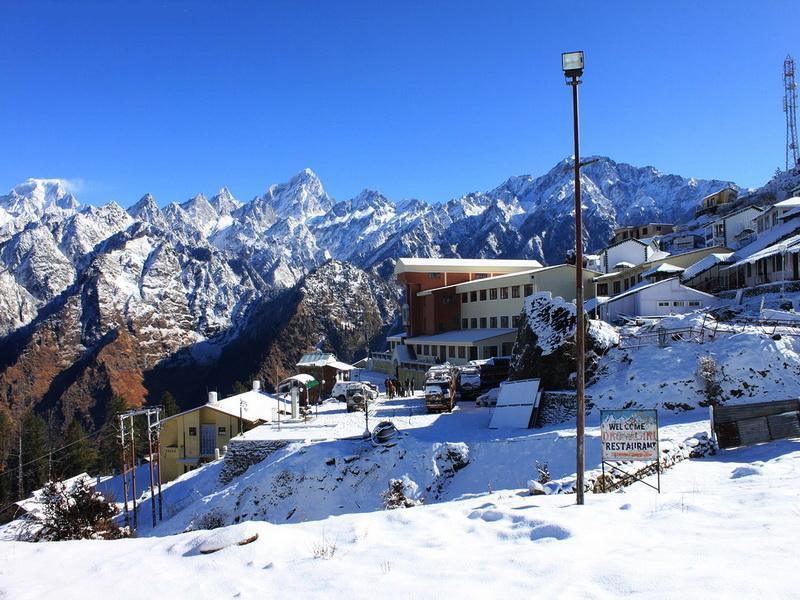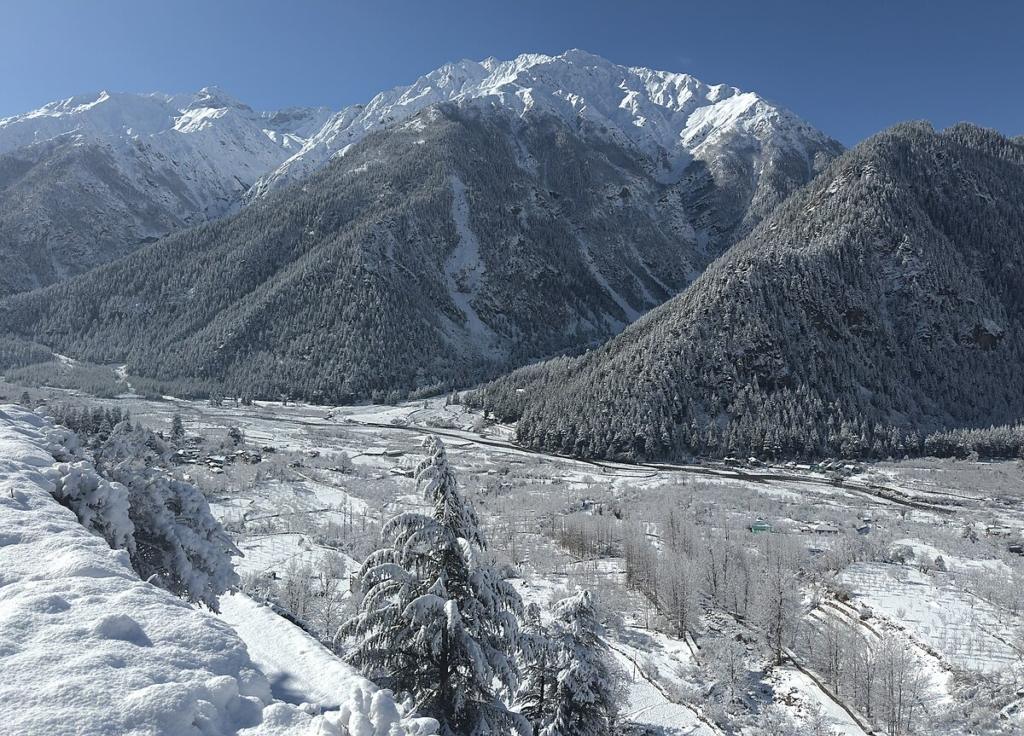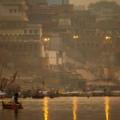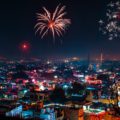Hidden Snow Destinations in North India for a Crowd-Free Winter Escape

Winter in North India often feels like a déjà vu—endless reels from Shimla Mall Road, Manali’s Hidimba queue stretching into parking lots, Auli’s ski slopes full of tourists waiting for their turn, and Gulmarg bursting at the seams during long weekends. As magical as snow is, it loses its charm when thousands of people gather in the same place, all chasing the same winter wonder.
But India’s Himalayas hold secrets—quiet villages where snow falls silently on tin roofs, frozen lakes shimmer under thin winter sunlight, pine forests stand still in all-white silence, and local families sit by the bukhari sharing stories of winters past. These remote hamlets don’t make it to trending reels, they’re not marketed heavily, and many don’t even pop up on mainstream travel itineraries. Yet, they offer the kind of winter that feels untouched, intimate, and truly magical.
If you have ever imagined yourself waking up to absolute silence, stepping outside to find fresh snow on the railing, walking through empty forests, or sipping hot chai while watching slow flakes drift from the sky—these are the places for you.
This guide uncovers the best secret winter destinations in North India—snow-covered escapes in Himachal Pradesh, Uttarakhand, Jammu & Kashmir, and Ladakh—all perfect for travellers who want beauty without crowds, authenticity without over-tourism, and winter magic without chaos.
Whether you are searching for offbeat winter places in India, snowfall destinations without crowds, hidden winter getaways, quiet snow villages, or best secret snow places in the Himalayas, this blog brings everything together—beautifully, descriptively, and in-depth.
In this Blog
Why Choose Offbeat Winter Destinations?
Crowded winter destinations may have signature views, but the Himalayas reveal their true essence only in silence. Here’s why choosing offbeat snow places is worth it:
1. Undisturbed Landscapes
Fresh, powdery snow that hasn’t been stepped on. Houses with thick snow caps. Frozen trees. Empty bridges. The Himalayas look postcard-perfect with no human interference.
2. Peaceful Atmosphere
Instead of nightclub music echoing across the mountains, you hear wind passing through pine forests, river streams flowing under sheets of ice, and snow crunching beneath your boots.
3. Authentic Local Culture
Stay with mountain families, eat winter delicacies like siddu, bhang ki chutney, thukpa, churpi, or rajma chawal, and understand how people live through harsh winters.
4. Affordable Winter Travel
No surge pricing, no last-minute inflated hotel rates, and no expensive activities to burn your pockets.
5. Safer & More Sustainable
Less footfall means cleaner trails, preserved ecology, and more peaceful experiences.
Himachal Pradesh

Most travellers associate Himachal Pradesh with Manali, Shimla, Kufri, Dharamshala, or Kasol. But beyond the usual tourist circuits lies a completely different Himachal — a world of untouched Himalayan winter landscapes, remote villages buried under thick snow, frozen rivers glistening in the sun, and centuries-old wooden houses standing stoically through long winters. These are the regions where the air is colder, the silence deeper, the roads emptier, and nature at its most pristine.
What makes these Himachal winter destinations truly special is the lack of crowds and the overwhelming presence of nature. You don’t share viewpoints with busloads of tourists. You don’t queue for food or treks. You don’t hear traffic noise or see neon signboards. Instead, you experience raw, intimate winter beauty the way the Himalayas have been for hundreds of years.
1. Chitkul – India’s Last Village, Frozen in Time
At 11,320 ft in the Kinnaur district, Chitkul becomes one of India’s most dramatic winter landscapes. The entire village feels like a painting — wooden houses dusted with snow, plumes of smoke rising from chimneys, frozen fields stretching into the distance, and a quiet Baspa River shimmering like liquid glass under the soft winter sun.
Chitkul is not just cold — it is bone-deep winter. From December to March, snow covers the village in thick layers, often shutting access for days. This natural barrier keeps tourism minimal, preserving the purity of the valley.
Why Chitkul is a top winter destination in Himachal Pradesh
- The Baspa River partially freezes, creating striking patterns and reflections
- Snow envelopes everything — rooftops, paths, fences, trees
- Crystal-clear skies offer uninterrupted views of the Kinnaur Kailash peaks
- The silence is overwhelming — no vehicles, no crowds, only nature’s sounds
Things to experience in winter
- Walk to Nagasthi ITBP post if weather permits
- Capture long-exposure shots of the frozen riverscape
- Witness pink-orange sunrises glowing over the snow-covered valley
- Stay in authentic Kinnauri homestays and understand life in sub-zero temperatures
Chitkul is one of the best places to witness real Himalayan winter without any tourist rush.
2. Shoja – The Doorway to Snowy Jalori Pass
Hidden between Jibhi and Jalori Pass, Shoja is one of Himachal’s quietest winter villages. As snowfall begins, the landscape transforms dramatically — pine branches hold clusters of snow, tiny wooden temples look like miniature winter shrines, and the entire valley is layered in white.
Unlike tourist-heavy Jibhi, Shoja remains deeply peaceful, offering a rare combination of forest silence, snowfall, and panoramic valley views.
Why winter in Shoja feels magical
- Serolsar Lake trek becomes a stunning winter trail covered with soft snow
- Waterfalls in the region freeze, forming icy curtains
- Misty mornings create a mystical, movie-like atmosphere
- Pine forests become postcard-perfect winter scenes
Walking through Shoja in January feels like stepping inside a quiet Himalayan forest preserved in glass.
3. Nako – The Frozen Lake Village of Kinnaur
At nearly 12,000 feet, Nako is one of the most dramatic winter destinations in India. Here, the Himalayan cold is sharper, the wind is harsher, and the silence is almost meditative. The signature attraction — Nako Lake — freezes entirely, turning into a giant reflective surface.
Winter highlights of Nako
- The frozen lake reflects mountains like a natural iceberg mirror
- Traditional mud houses appear carved out of snow
- Tibetan flags flutter against a stark white-and-blue backdrop
- Clear skies offer excellent views of the Trans-Himalayan ranges
Nako feels surreal — a mix of Tibetan charm, desert-like terrain, and extreme winter minimalism.
4. Kalpa – Snowy Apple Orchards & Kinner Kailash Views
Kalpa, located in the heart of Kinnaur, is one of the most accessible yet stunning winter destinations in Himachal Pradesh. It receives early snowfall, often before other parts of the state, giving it a long winter season.
Why Kalpa is perfect for winter travellers
- The mighty Kinner Kailash massif looks unbelievably close and clear in winter
- Snow rests gently on apple orchards, creating dreamy white rows
- Narrow village paths offer peaceful snow walks
- It remains accessible even during moderate snowfall
Kalpa is ideal for those who want a scenic winter vacation without extreme remoteness.
5. Tirthan Valley – Snowy Silence by the River
Tirthan Valley offers a rare combination of riverside scenery, snowfall, dense forests, and complete peace. Unlike nearby destinations such as Manali or Kasol, Tirthan remains protected from mass tourism.
Why Tirthan is an excellent winter hideout
- Forest trails turn into snow-laden paths
- The Tirthan River flows beside frost-covered rocks
- Wildlife sightings increase near lower altitudes
- Cozy riverside homestays provide warmth with wood-fired heating
This valley is perfect for travellers seeking a quiet winter holiday in nature with plenty of photography, birdwatching, and slow travel.
Uttarakhand

Uttarakhand’s winter beauty lies not just in Auli or Nainital but in its offbeat high-altitude villages, each offering deep snow, mountain silence, and breathtaking panoramas of the Greater Himalayas.
1. Munsiyari – Panchachuli Peaks Drenched in Snow
Munsiyari is Uttarakhand’s answer to the Alps — a valley surrounded by the majestic Panchachuli Peaks, all five of which remain snow-covered through winter. The village receives heavy snowfall, turning every rooftop and meadow into a sparkling white sheet.
Why visit Munsiyari in winter
- Snow blankets the entire valley from December to February
- Stunning close-up views of Himalayan giants
- Winter treks like Khaliya Top become magical
- Clear skies ideal for astrophotography
The sheer scale of the mountains here is overwhelming — winter makes it even more dramatic.
2. Khirsu – Snow-Laden Deodar Forest Retreat
Khirsu is a peaceful, family-friendly winter destination located near Pauri. It receives soft, fluffy snow and offers wide panoramas of more than 300 Himalayan peaks.
Winter charm of Khirsu
- Deodar forests covered in fresh snow
- Slow, quiet village life
- Great for beginners wanting to experience snow without difficult travel
- Close to major towns, making it easy to access
Khirsu is ideal for travellers who want gentle snowfall and mountain views with complete peace.
3. Chopta – Mini Switzerland Without the Chaos
Chopta is famous among trekkers but surprisingly remains uncrowded during deep winter. The meadows, forests, and trails leading to Tungnath–Chandrashila look absolutely magical when blanketed in snow.
Why Chopta stands out in winter
- Deep snowfall from late December
- Perfect base for winter treks
- Forests look ethereal under snow
- Fewer tourists compared to peak seasons
It’s one of the best places in India for winter trekking and snow adventure.
4. Lohajung – Gateway to Frozen Mountain Lakes
Located in Chamoli, Lohajung acts as the starting point for India’s most iconic winter treks — particularly the Brahmatal Trek, famous for its frozen lake and dramatic Himalayan views.
Why Lohajung is a winter delight
- Oak forests and rhododendrons covered in snow
- Multiple frozen lakes within trekking distance
- Excellent sunrise and sunset mountain views
- Snow stays until March, giving a long winter season
Lohajung is ideal for anyone seeking adventure, snow, and Himalayan alpine beauty.
Jammu & Kashmir

Silent Valleys, Powdery Snow & Untouched Winter Landscapes
Kashmir’s winter beauty extends far beyond Gulmarg and Pahalgam. There are valleys where snowfall is deeper, slopes wider, and silence purer — untouched by mainstream tourism.
1. Doodhpathri – Kashmir’s Winter Meadow
One of the most accessible winter gems near Srinagar, Doodhpathri transforms into a massive snow meadow surrounded by towering pine forests.
Why Doodhpathri is gaining winter popularity
- Snow remains soft and powder-like
- Meadows stretch endlessly, perfect for walks and photography
- Very little commercialisation
- Quick, scenic drive from Srinagar
It’s a peaceful destination for travellers looking for snowfall near Srinagar without crowds.
2. Gurez Valley – India’s Most Underrated Winter Wonderland
Gurez is one of Kashmir’s most stunning high-altitude valleys, cut off for parts of winter due to extreme snowfall. The isolation is what makes it magical.
Why Gurez is unforgettable in winter
- Snow-covered Kishanganga River
- Jaw-dropping views of Habba Khatoon peak
- Traditional log houses dusted in white
- Absolute silence due to minimal tourism
Gurez offers a European winter feel right inside India.
3. Margan Valley – White Slopes, Zero Tourists
Margan Valley is rarely visited even in summer — in winter, it becomes one of the quietest snowy places in India.
What makes Margan Valley unique
- Gigantic untouched alpine slopes
- Massive snowfields ideal for nature walks
- Zero shops or tourist infrastructure
- Authentic Himalayan wilderness
It remains one of Kashmir’s most raw, pristine, and secluded winter landscapes.
Ladakh

Winter in Ladakh is an experience unlike anywhere else — harsh, dramatic, and incredibly rewarding. The combination of snow + desert + monasteries + starlit skies makes it one of the world’s most extraordinary winter regions.
1. Turtuk – A Snow-Draped Baltistan Village
Turtuk is known for its apricots in summer, but in winter, it becomes a peaceful and unbelievably beautiful snow village.
Winter magic in Turtuk
- Stone alleys filled with untouched snow
- Frozen fields and farms
- Traditional Balti homes glowing in winter sunlight
- Warm local hospitality
Turtuk is one of Ladakh’s most culturally rich winter destinations.
2. Hanle – Milky Way Over Frozen Plains
Hanle is a dream come true for stargazers, astronomers, photographers, and winter travellers seeking solitude.
Why Hanle is extraordinary in winter
- Crystal-clear skies with zero light pollution
- Snow-covered desert plains
- India’s first Dark Sky Reserve
- Perfect for astrophotography and night sky observation
Hanle is one of the best places on Earth to see the Milky Way in winter.
3. Sumur – The Quiet Side of Nubra Valley
Sumur offers everything Nubra is known for — desert landscapes, monasteries, mountain views — but with far more silence and fewer tourists.
Winter charm of Sumur
- Snow resting on sand dunes
- Beautiful monastery views
- Frozen riverbanks
- Ideal for peaceful, slow travel
Best Time to Visit These Winter Destinations
Winter in the Himalayas unfolds in three distinct phases, each offering a different kind of snow experience. Understanding these seasonal shifts helps travellers choose the right time for the kind of winter holiday they want — whether it’s gentle snowfall, intense whiteouts, or calm, sunny late-winter landscapes.
Early Winter (November – December)
Early winter is ideal for travellers who want light snowfall, open roads, and manageable cold. The first snow begins to settle in higher-altitude places like Kalpa, Nako, Chitkul, Munsiyari, Chopta, and Doodhpathri, creating a fresh, soft winter atmosphere without extreme conditions. Days are usually sunny, roads are mostly accessible, and the landscapes look beautifully transitional — part autumn, part winter. This is a great time for families, beginners, and road-trip lovers who want to enjoy snow without the unpredictability of peak season.
Peak Winter (January – February)
These two months represent true Himalayan winter. Snowfall becomes heavier and more frequent, temperatures drop sharply below freezing, and valleys transform into full-fledged snow worlds. Roofs collect thick layers of frost, rivers begin to freeze, and forests turn completely white. This is the best period for travellers who want deep snow, dramatic landscapes, frozen lakes, and intense winter beauty. The atmosphere is breathtaking, but it can also bring road closures or minor delays — making it perfect for seasoned winter travellers, photographers, and those ready for real snow conditions.
Late Winter (March)
March is a calm, highly underrated time to visit. Snow still lingers on meadows, lakes, and forest trails, but the days are brighter and far more comfortable. Visibility improves dramatically, skies stay clear for long hours, and road access becomes much easier. This is an excellent period for travellers who want snow-covered views without harsh temperatures, easy driving conditions, and relaxed exploration.
Special Note: Kashmir & Ladakh (December – March)
Snow remains far more consistent and long-lasting in regions like Gurez, Doodhpathri, Hanle, Turtuk, and Sumur. These areas experience stronger winter conditions with snow often staying well into late March, offering extended opportunities for offbeat snow travel.
Travel Tips for Offbeat Winter Destinations
- Always carry a thermos, chocolates, and ORS
- Prefer Himalayan-ready vehicles (4×4)
- Stay in village homestays for warmth and safety
- Pack multiple layers, gloves, snow boots, UV sunglasses
- Check road and weather updates daily
- Keep buffer days in case of snowfall-related delays
- Carry cash — ATMs are scarce in remote areas
The Himalayas offer two winters—one you see in popular destinations, and the other you experience in silence. The second is raw, pure, and deeply beautiful. If you’re dreaming of snow without crowds, frozen lakes without selfie sticks, meadows without tourists, and real winter magic—these secret winter destinations in North India are exactly where you need to be. Pack warm, travel slowly, and let the mountains show you their quieter, more intimate side.
Cover Image Credits: Mandeep Thander via Flickr





